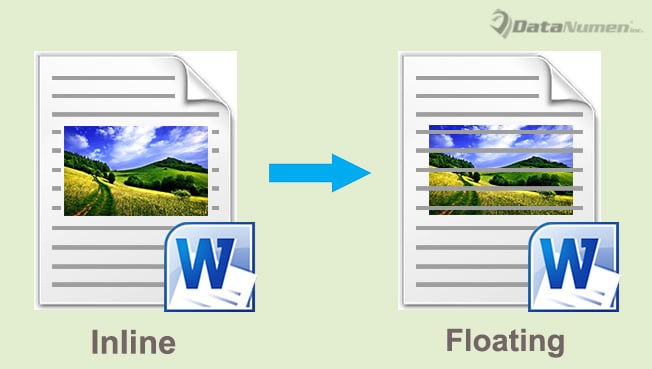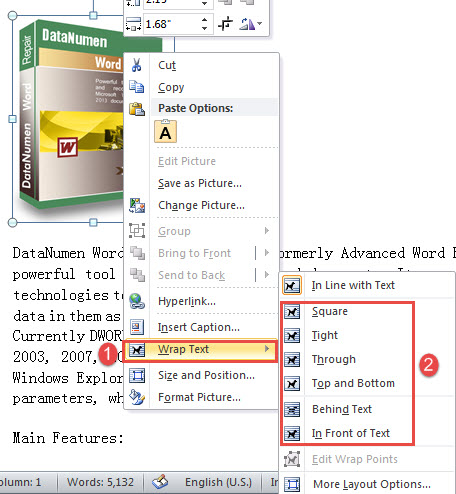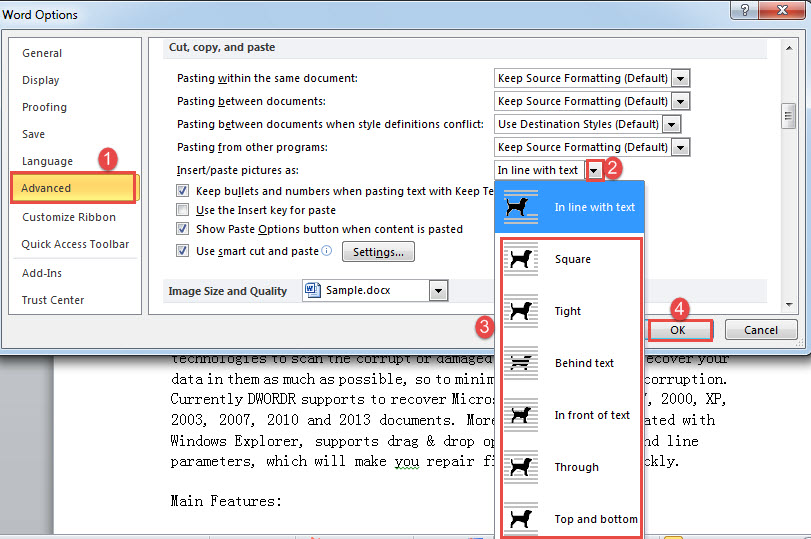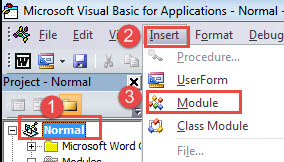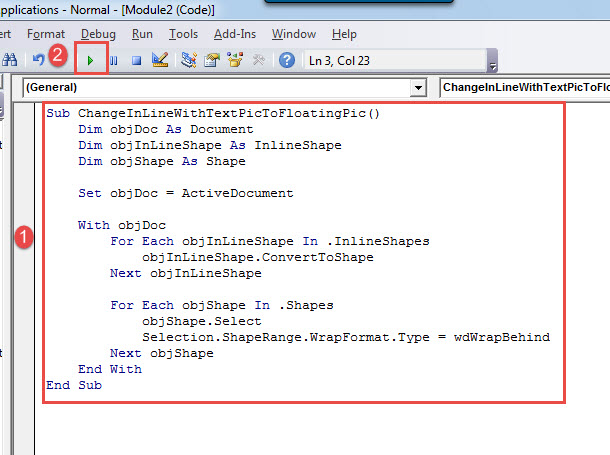In this article, we will present you with 3 ways to change inline pictures to floating ones in your Word document.
As you may be aware, whenever we insert a picture into a Word document, it takes the “In line with text” wrapping style by default. In this way, a picture is considered as a large character, which makes us hard to move it around simply by clicking and dragging. Accordingly, we need to change these inline pictures to floating ones as to easily adjust their locations.
As always, we have 3 methods for you to pick up.
Method 1: Change the Wrapping Style of One Picture Manually
- Firstly, right click on the picture and move cursor over “Wrap Text” option on the contextual menu.
- Next choose any style other than “In line with text”. Then you will be able to drag the picture to wherever you like.
Method 2: Alter the Default Style
As mentioned above, the default wrapping style is set in “In line with text”. However, you can modify the configuration before inserting pictures with the following steps.
- To start off, click “File” tab then the “Options” command to pen “Word Options” dialog box.
- Next click “Advanced” on the left column.
- Scroll don to the “Cut, copy and paste” part and find the “Insert/paste picture as” option.
- Click on the drop-down button to select a wrapping style.
- Last but not the least, click “OK” to save the new setting.
All pictures inserted in the future will take floating wrapping style.
Method 3: Change the Wrapping Style of Multiple Pictures via VBA
- To begin with, press “Alt+ F11” to start the VBA editor.
- Next, go to “Normal” project by clicking on “Normal”.
- Then click “Insert” tab on the menu bar and choose “Module” on the drop-down menu.
- Now double click on the new module to bring out the coding space on the right side of editor.
- Paste the bellowing macro there:
Sub ChangeInLineWithTextPicToFloatingPic()
Dim objDoc As Document
Dim objInLineShape As InlineShape
Dim objShape As Shape
Set objDoc = ActiveDocument
With objDoc
For Each objInLineShape In .InlineShapes
objInLineShape.ConvertToShape
Next objInLineShape
For Each objShape In .Shapes
objShape.Select
Selection.ShapeRange.WrapFormat.Type = wdWrapBehind
Next objShape
End With
End Sub
- Finally, click “Run” or hit “F5”.
Note:
This macro will change all inline pictures in the active document to floating ones and set them in “Behind Text” style. In case you need to format them in other style, just change the constant in code line “Selection.ShapeRange.WrapFormat.Type = wdWrapBehind”. For detailed enumeration, you can visit this link: https://docs.microsoft.com/en-us/office/vba/api/Word.WdWrapType
Backups Matter
As said that an ounce of prevention is worth a pound of cure. Though we can find ways to rescue files after Word corruption, it always seems too late. The most ideal is, of course, to make preventive measures, such as take backups. With them at hand, you will feel more comfortable to perform actions without worrying losing data.
Author Introduction:
Vera Chen is a data recovery expert in DataNumen, Inc., which is the world leader in data recovery technologies, including corrupt xls and pdf repair software products. For more information visit www.datanumen.com
